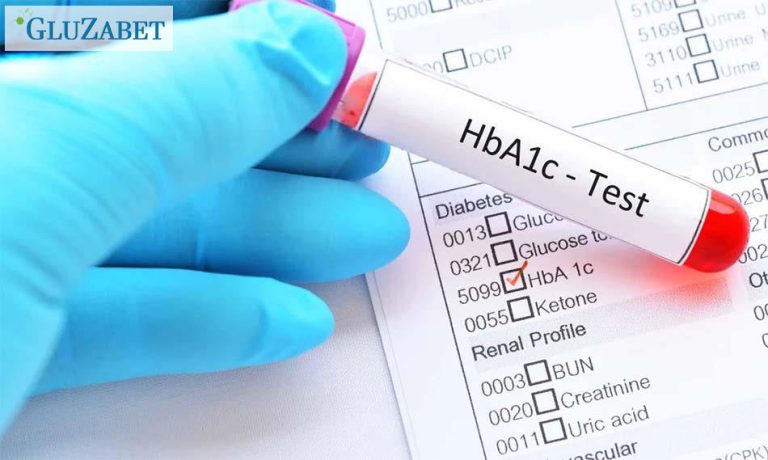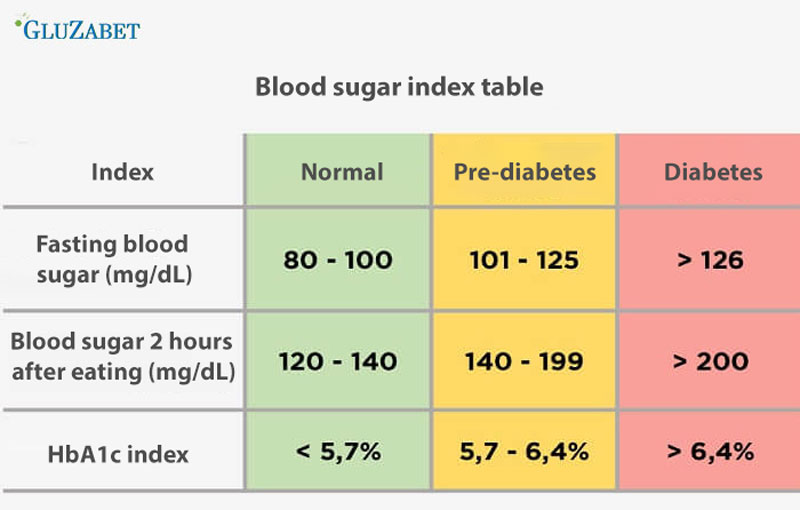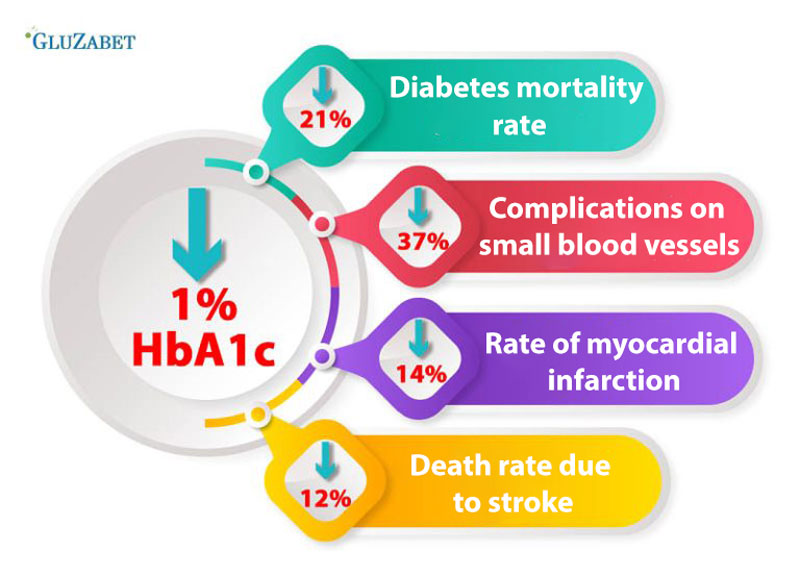What is the HbA1c index? What level indicates diabetes?
To diagnose and monitor diabetes, doctors often use the HbA1c index. So what level indicates diabetes? Let’s explore this index and how to maintain a safe level to prevent and treat diabetes.
Contents
What is the HbA1c index?
The HbA1c index (also known as A1C) is a measure of a person’s blood sugar control over the preceding 2-3 months. HbA1c stands for Hemoglobin A1c, a type of protein found in red blood cells that binds to glucose in the blood. When glucose combines with hemoglobin, it forms HbA1c.
The HbA1c index is expressed as a percentage, indicating the amount of HbA1c relative to the total amount of hemoglobin in the blood. For example, if the HbA1c index is 6%, it means that 6% of the total hemoglobin in the blood is HbA1c. This index is also referred to as “average blood sugar level” over the preceding 2-3 months.

What level indicates diabetes?
The HbA1c index is divided into different levels to assess a person’s blood sugar control. Based on the result of this index, doctors can make a diagnosis and recommend appropriate treatment methods. Below are the HbA1c levels and their meanings:
Below 5.7%: Normal, no signs of diabetes
An HbA1c level below 5.7% is considered normal and shows no signs of diabetes. This is the desired level for most people, especially those at high risk of diabetes. If your HbA1c level is below 5.7%, you can be reassured about your health status and continue to maintain a healthy lifestyle.
From 5.7% to 6.4%: Prediabetes, high risk of developing diabetes
When the HbA1c level is between 5.7% and 6.4%, it indicates prediabetes. This means that your body has started to have difficulty controlling blood sugar and there is a high risk of developing type 2 diabetes. In this case, you need to monitor and adjust your diet and exercise to reduce the HbA1c level to a safe range.
6.5% and above: Sufficient to diagnose diabetes
An HbA1c level of 6.5% and above is sufficient to diagnose diabetes. This is a high level and indicates that your body is unable to control blood sugar. If you have this level, your doctor will make a diagnosis and recommend appropriate treatment methods to control diabetes.

Factors affecting the HbA1c index
The HbA1c index can be affected by various factors, so maintaining a safe level of this index is not easy. Below are some factors that can increase or decrease the HbA1c level:
Factors that increase the HbA1c level
- Anemia: When the body is anemic, the amount of hemoglobin in the blood decreases, thereby increasing the HbA1c ratio.
- Chronic kidney disease: Chronic kidney disease can increase the HbA1c level by affecting the function of cells in the body.
- Alcohol abuse: Excessive alcohol consumption can increase the HbA1c level by affecting the glucose metabolism in the body.
- Opioid intoxication: Opioid pain relievers can increase the HbA1c level.
Factors that decrease the HbA1c level
- Pregnant women: During pregnancy, women’s bodies produce more hormones to sustain the fetus, thereby reducing the HbA1c level.
- Chronic blood loss: When the body experiences chronic blood loss, the amount of hemoglobin in the blood decreases, thereby reducing the HbA1c ratio.
- Severe bleeding anemia: Similar to chronic blood loss, severe bleeding anemia can also decrease the HbA1c level.
How to maintain a safe HbA1c level
To reduce and maintain the HbA1c level at a safe range, you need to take the following measures:
Maintain a healthy diet
Diet is the most important factor in maintaining the HbA1c level at a safe range. You should consume less sugar and starch, increase consumption of green vegetables, fruits, and fiber-rich foods. Additionally, you need to limit fast food, fried food, and sweets.

Regular exercise
Exercise is the best way to control blood sugar and reduce the HbA1c level. You can participate in activities such as walking, jogging, swimming, or join exercise classes like yoga, zumba, etc. Additionally, it’s important to exercise regularly and consistently for the best results.
Weight control
Weight is an important factor in maintaining the HbA1c level at a safe range. If you are overweight, you need to focus on weight loss by eating healthy and exercising. If you are underweight, you need to increase your food intake and supplement your nutrition to maintain health.
Keep a relaxed mind
Stress and anxiety can increase the HbA1c level. Therefore, try to keep a relaxed mind by engaging in recreational activities such as reading, listening to music, walking, etc. Additionally, pay attention to sleep and ensure you get enough sleep regularly.
High HbA1c level and the risk of diabetes complications
If your HbA1c level is high, the risk of diabetes complications will also increase. Diabetes complications can cause serious health consequences, including:
- Heart disease: Diabetes is a major cause of heart diseases, including angina, stroke, and heart failure.
- Neuropathy: Diabetes can damage nerve cells in the body, causing symptoms such as pain and numbness in the limbs.
- Kidney disease: Diabetes can cause kidney problems, from inflammation to kidney failure.
- Blindness: Diabetes can cause vision problems, from blurred vision to blindness.

Therefore, maintaining the HbA1c level at a safe range is very important for preventing and treating diabetes complications.
Conclusion
The HbA1c index is an important measure in diagnosing and monitoring diabetes. If this index is high, the risk of diabetes complications will also increase. Therefore, understanding how much indicates diabetes and knowing how to maintain the HbA1c level at a safe range is very important for preventing and treating diabetes. You can maintain this index by following a healthy diet, exercising regularly, controlling weight, and keeping a relaxed mind. Additionally, it’s important to regularly check your health and monitor the HbA1c level to ensure the best health for yourself.
>>Managing Blood Sugar Levels in the Elderly
See more:





